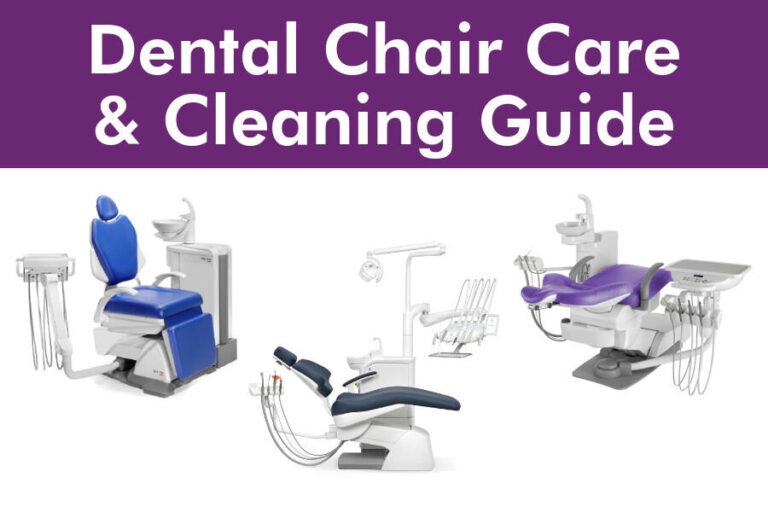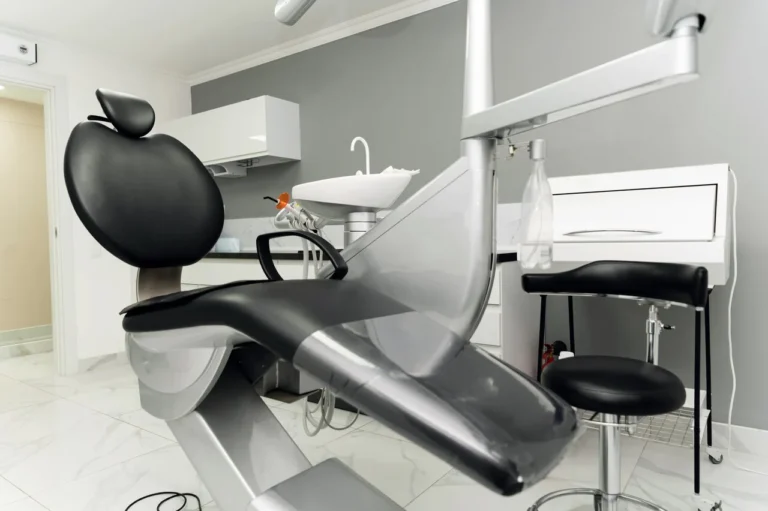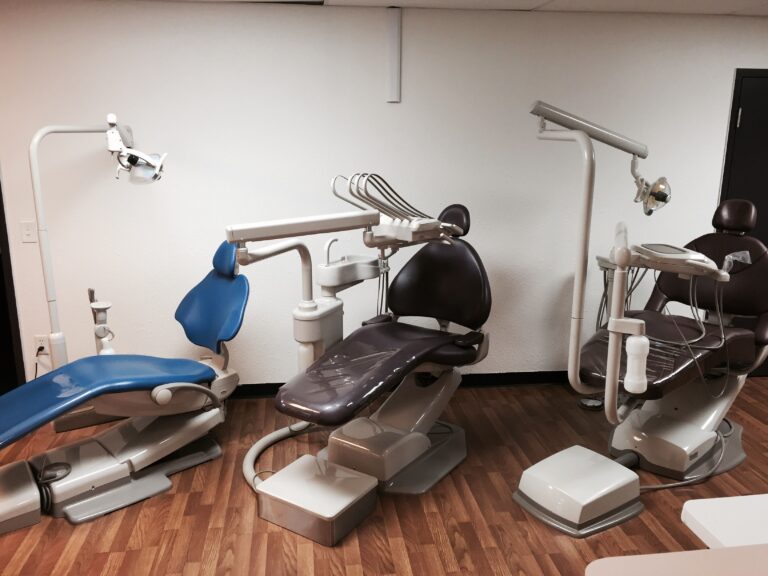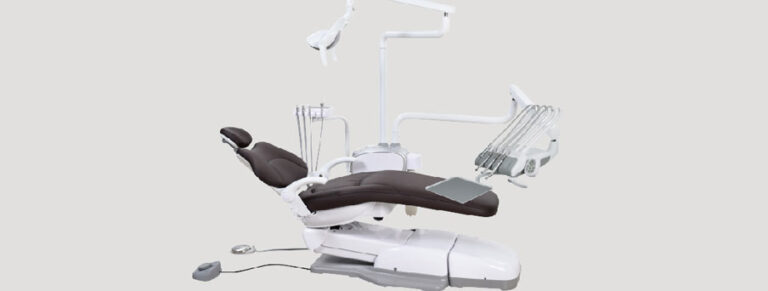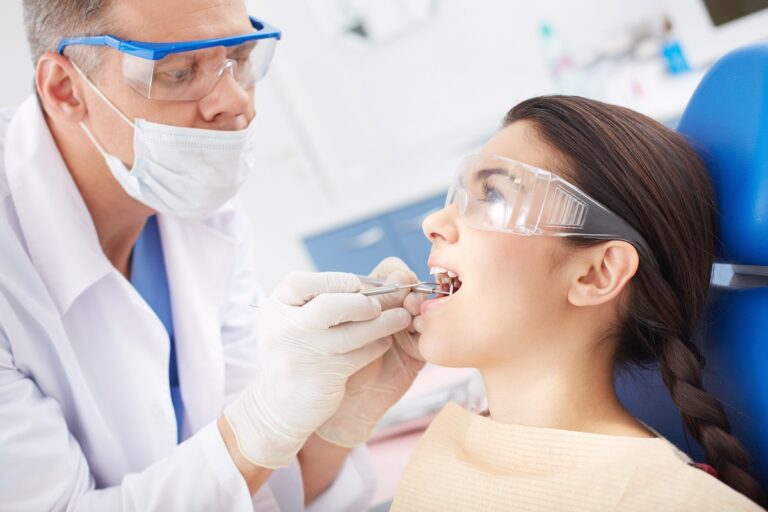In the realm of dental practice, the significance of a dental chair extends beyond a mere piece of equipment; it embodies comfort for patients and operational efficacy for practitioners. The intricate components and functionalities of dental chairs render them susceptible to a variety of issues, ranging from mechanical malfunctions to the wear and tear of upholstery. Addressing these challenges proactively through maintenance and repair is critical to ensuring patient safety, enhancing patient experience, and optimizing the chair’s lifespan.
This comprehensive guide delves into effective strategies for maintaining dental chairs, troubleshooting common problems, and determining when a replacement is necessary, all while upholding the highest standards of dental practice. By implementing these strategies, dental practices can maximize the longevity of their dental chairs, leading to cost savings and improved patient care.
Establishing a Routine Dental Chair Maintenance Plan
Step 1: Review Manufacturer Guidelines
Every dental chair comes with a unique set of instructions for optimal care. It’s crucial to understand these guidelines thoroughly to maintain the chair’s functionality and adhere to warranty requirements. Familiarize yourself with the specific maintenance needs of your dental chair to ensure you’re providing the best possible care.
Step 2: Create a Maintenance Schedule
Developing a detailed schedule is vital for ensuring all aspects of chair maintenance are covered. Categorize tasks into daily, weekly, monthly, and yearly activities to keep your maintenance plan organized and efficient. This will help you stay on top of necessary maintenance and prevent potential issues from arising.
Step 3: Assign Responsibilities
A clear allocation of maintenance tasks among your dental team ensures accountability and efficiency. From daily cleaning to coordinating with technicians, every role is crucial. Designate specific team members to handle each aspect of the maintenance plan to ensure nothing falls through the cracks.
Step 4: Training and Education
Ensure your team is well-versed in maintenance protocols by providing regular training sessions. This can significantly improve their ability to identify and resolve issues swiftly. Keep your team up-to-date on the latest maintenance techniques and best practices to ensure your dental chairs are always in top condition.
Step 5: Documentation and Record-Keeping
Keeping a log of all maintenance activities aids in monitoring the chair’s condition over time and is invaluable during audits or equipment evaluations. Maintain detailed records of all maintenance tasks, repairs, and replacements to help you track the performance of your dental chairs over time.
Step 6: Regular Inspections
Routine visual inspections can catch early signs of wear or damage, allowing for prompt interventions before minor issues escalate. Schedule regular inspections of your dental chairs to identify potential problems and address them before they become more serious.
Step 7: Partnering with Qualified Technicians
For complex maintenance tasks, it’s essential to collaborate with certified technicians who can provide expert care and advice. Build relationships with trusted technicians who specialize in dental chair maintenance and repair to ensure your equipment is always in the best possible hands.
Step 8: Updating and Reviewing the Plan
Regularly reassess and update your maintenance plan to accommodate evolving equipment needs and technological advancements. Stay adaptable and open to new maintenance techniques and best practices to ensure your dental chairs are always functioning at their best.
Dental Chair Maintenance Checklist
To help you stay on top of your dental chair maintenance, here’s a handy checklist:
Daily:
- Clean and disinfect the chair after each patient
- Flush handpiece waterlines
- Lubricate dental chair parts
Weekly:
- Check and replace O-rings on handpiece couplers
- Clean and replace plaster traps
- Inspect the chair for any strange noises or air or water leaks
Monthly:
- Clean model trimmers
- Lubricate and service frequently used parts
- Inspect the chair to identify potential problems before they cause major damage or downtime
Yearly:
- Change sterilizer door gaskets, bellows, and fill filters
- Check handpiece pressures and adjust to the manufacturer’s specifications as necessary
Remember to always follow the manufacturer’s guidelines and consult with certified technicians for complex maintenance tasks. Regular maintenance and proper care will ensure the longevity and efficiency of your dental chair, providing high-quality care to your patients.
Addressing Common Dental Chair Issues and Repairs
Despite regular maintenance, dental chairs may still experience issues from time to time. Here are some common problems and how to address them:
Stuck or Unresponsive Chair Movements
Issues with hydraulic systems or control switches often lead to unresponsive chair movements. Regular checks and timely interventions are key to preventing such occurrences. If you notice your dental chair is not moving smoothly or is unresponsive to controls, it’s important to address the issue promptly to avoid further damage.
Squeaky or Noisy Movements
Regular lubrication and tightening of loose components can significantly reduce noise and ensure smooth operation. If your dental chair is making unusual noises during movement, it may be a sign that certain components need to be lubricated or tightened. Addressing these issues early can prevent more serious problems down the line.
Torn or Worn Upholstery
Consistent cleaning and using protective covers can extend the life of the upholstery. In cases of severe damage, consider professional reupholstering services. Torn or worn upholstery not only detracts from the appearance of your dental chair but can also compromise patient comfort and safety.
Faulty Foot Control Pedals
Regular cleaning and checking of electrical connections can prevent malfunctions of foot control pedals. If your foot control pedals are not responding properly, it may be due to a buildup of debris or a loose electrical connection. Addressing these issues promptly can help ensure your dental chair is always functioning at its best.
Non-Functional Digital Controls
Regular calibration and checks for physical damage are crucial to keeping digital controls operational. If your dental chair’s digital controls are not functioning properly, it may be due to a software issue or physical damage to the controls themselves. Working with a qualified technician can help identify and resolve these issues quickly.
The Hidden Culprit: Solvents in Disinfectants
The impact of cleaning chemicals on dental chairs is a significant concern in dental healthcare. Certain solvents in disinfectants can damage chair upholstery and plastics, leading to deterioration and a shortened lifespan of the equipment.
Safety Data Sheets
Safety Data Sheets (SDS) are crucial for identifying harmful solvents in disinfectants. These sheets provide detailed information about the chemical composition of disinfectants, including any potentially harmful solvents. It’s important to avoid disinfectants containing chemicals such as ethyl alcohol or isopropyl alcohol (greater than 25% by volume), hydrogen peroxide, and chlorine compounds (such as sodium hypochlorite), as these can harm the surface finishes of dental chairs.
Disposable Barrier Covers
Disposable barrier covers, such as plastic dental chair covers, act as a protective layer between the disinfectant and the chair. These covers are designed to resist penetration by bacteria, viruses, and fluids, ensuring that the dental chair beneath remains uncontaminated. The Centers for Disease Control and Prevention (CDC) and dental chair manufacturers advocate for the use of these barriers, which should be changed between patients.
Regular Wiping with Damp to Wet Paper Towels
Regular wiping of dental chairs with damp or wet paper towels can help remove residual disinfectants without causing damage. This additional step prevents possible product discoloration or corrosion.
Solvent-Free Disinfectants
Opting for solvent-free disinfectants can eliminate the risk of damage from harsh chemicals. It’s advisable to use a specific, medium-level disinfectant for upholstery and lacquered or plastic surfaces.
Maintaining the integrity of dental chairs involves a combination of careful selection of disinfectants, regular cleaning, use of disposable barrier covers, and opting for solvent-free disinfectants when possible. These practices not only ensure the longevity of the dental chairs but also contribute to a hygienic and safe environment for both dental healthcare providers and patients.
When to Replace Your Dental Chair
A dental chair is more than just a seat for your patients. It’s a pivotal part of your dental practice, playing a significant role in the well-being of both patients and dentists. Knowing when to upgrade your dental chair can enhance patient comfort, improve operational efficiency, and even alleviate musculoskeletal pain for your team. Here are some signs that it might be time for a replacement:
Noisy or Jerky Movement
A dental chair should operate smoothly and quietly. If you notice noisy or jerky movement, it could be a sign of wear and tear or mechanical issues. This can disrupt the calm atmosphere of your practice and potentially make patients uneasy.
Worn or Damaged Upholstery
The condition of the upholstery is a key factor in patient comfort and perception of your practice. Worn or damaged upholstery can create an unprofessional and unsanitary environment. Modern materials, such as vinyl or leather, are more durable and easier to clean than older materials, improving the look and comfort of your dental chair while making it easier to maintain.
Outdated Technology
Outdated technology can hinder your practice’s efficiency and patient comfort. Many modern dental chairs come with features unavailable in older models, such as touchpad controls, memory positions, and automated procedures. Upgrading your dental chair’s lighting can also make a significant difference, with modern LED lights providing better illumination and helping you see details more clearly.
Lack of Maintenance
Inadequate maintenance can lead to more difficult and disruptive repair issues, reducing practice productivity. A well-functioning dental equipment management solution can help extend the lifespan of your dental chair and other equipment, reducing the need for replacements and investments over time.
Team’s Musculoskeletal Pain
Dentistry is a physically demanding profession, and musculoskeletal pain among your team members can be a sign that your dental chair needs to be replaced. Prolonged and awkward postures can subject dentists to unnatural forces and stresses, leading to discomfort and pain. A well-designed dental chair can help enhance your productivity as a dentist and provide comfort for your patients.
Additional Common Problems and Their Solutions
Maintaining the functionality and longevity of dental chairs involves addressing specific issues that may arise. Here are some common problems and their solutions:
Suction Problems
Regular cleaning and checking of pipelines can prevent suction issues. If your suction system is not effectively removing saliva, debris, or fluids, check for clogs, leaks, or worn-out components in the hoses, filters, and pipelines. For instance, if the high and low suction can’t work or the low suction has little power after a period of time, it could be due to incorrect pipeline connections or waste blocking the pipelines.
Treatment Machine Dysfunction
Ensuring the correct wiring and functionality of control systems can prevent treatment machine dysfunction. For example, if the control wire and the motor wire are connected incorrectly or the mask or controller is damaged, it could lead to dysfunction. Regular checks and maintenance can help identify and rectify these issues early.
Lighting and Electrical Problems
Regular bulb replacements and checking connections can prevent lighting and electrical problems. For instance, if the bulb is burned out or there is poor contact with the lamp, it could lead to lighting issues. In some cases, the light touchpad might malfunction, requiring a check of continuity between the transformer, flex arm PC board, and lighthead.
Plumbing and Water Supply Issues
Maintaining clean filters and checking for proper water source connections can prevent plumbing and water supply issues. For instance, city water often contains sediment, scale, and fine particulate matter that can harm dental equipment. Each chair requires its own individual water supply, and each basin needs to be connected to the surgery’s water supply.
Circuit Board and Control Issues
Regular checks for short circuits and loose connections are crucial to prevent circuit board and control issues. For example, if the footswitch or control panel is damaged, malfunctioning, or improperly connected, the chair may not respond to commands.
Extending the Lifespan of Dental Chairs through Careful Use
Extending the lifespan of a dental chair is crucial for the financial health of a dental practice and for ensuring consistent patient comfort and safety. Here are some strategies to achieve this:
Educate Dental Staff
Training staff on the correct operation and handling of dental chairs can prevent misuse and potential damage. This includes adhering to responsibilities regarding the use of correct cleaning supplies and sanitizing agents, as well as lubricating and servicing frequently used parts.
Weight Capacity Awareness
Dental chairs have specific weight limits, and exceeding these can stress the chair’s components and potentially lead to damage. For example, the A-Dec 500 dental chair has a weight limit of 227kg, while the Belmont Voyager I, II, and III have a weight limit of 135kg.
Use Disposable Barriers
These can minimize direct contact and wear on chair surfaces, helping to extend the chair’s lifespan.
Proper Cleaning and Disinfection
Adhering to manufacturer-recommended cleaning agents and techniques is crucial. Dental chairs should be regularly cleaned with warm, soapy water, and if additional cleaning is required due to the presence of blood or urine, an alcohol-based cleaner can be used.
Avoid Sharp Instruments on Upholstery
Handling instruments carefully can prevent tears or punctures in the chair’s upholstery.
Maintenance and Lubrication
Following the manufacturer’s advice, lubricating chair mechanisms on a regular basis can help the chair last longer. This includes sterilizing and lubricating handpieces, disinfecting operatory equipment, and flushing water lines.
Limit Chair Movement Speed
Operating controls at moderate speeds can reduce mechanical strain on the chair.
Proper Patient Positioning
Correct positioning of patients not only ensures their comfort but also contributes to chair longevity. For example, the supine position is often recommended for patients with a history of respiratory problems or obesity.
Avoid Overloading Chair Trays
Evenly distributing weight on chair trays can prevent structural strain and potential damage.
By implementing these strategies, dental practices can maximize the lifespan of their dental chairs, leading to cost savings and improved patient care. Explore additional tips and techniques in our guide to maintaining dental chair accessories for optimal performance.
Conclusion
Maintaining dental chairs is integral to the smooth operation of a dental practice. By establishing a routine maintenance plan, addressing common issues, and understanding when replacement is necessary, dental practices can ensure the longevity and reliability of their equipment. Proactive care and maintenance not only extend the lifespan of dental chairs but also contribute significantly to the overall patient experience and practice efficiency.
Investing time and resources into dental chair maintenance is a wise decision that pays off in the long run. By following the strategies outlined in this comprehensive guide, dental practices can optimize their equipment’s performance, minimize downtime, and provide the highest quality of care to their patients. Remember, a well-maintained dental chair is the foundation of a successful and thriving dental practice.
FAQs
What are the most common issues with dental chairs?
The most common issues include unresponsive chair movements, noisy adjustments, upholstery damage, and malfunctioning control systems.
How often should dental chairs be maintained?
Maintenance frequency varies based on usage but typically includes daily, weekly, monthly, and annual tasks.
Can upholstery be replaced, or should the entire chair be replaced?
Upholstery can often be replaced, but if the chair is outdated or has multiple issues, full replacement might be more cost-effective.

